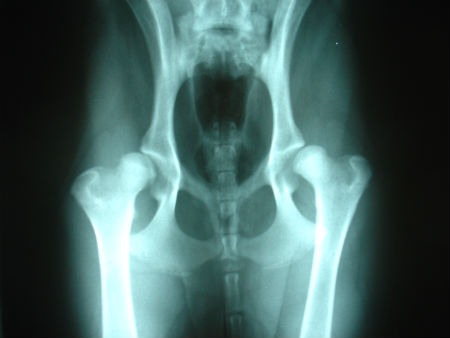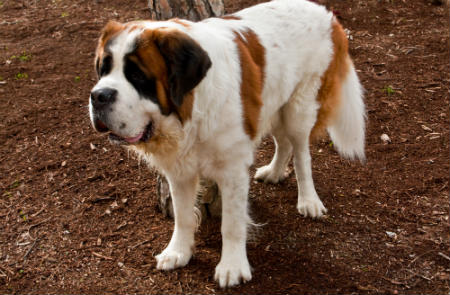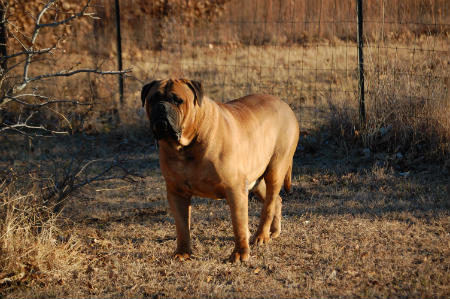Hip dysplasia in dogs: most affected symptoms, treatment and races
What is it?
Like the human body, the bone system of dogs is linked by a kind of "gears", which allows the functioning and mobility of each joint. If these gears do not fit perfectly in any of their cavities, there may be an alteration in the canine, among the most common is the hip dysplasia and the elbow dysplasia. This guy is a malformation in the hip area, also known as coxofemoral zone, which is presented when the head of the femur (whose shape is a ball) does not fit properly in the concave cavity that corresponds (called acetabulum) and that is inside the pelvic bone.
What are the races most affected by hip dysplasia?
This pathology more frequently affects large and high weight dogs, even more when they have not received adequate care such as the necessary calcium supply, a balanced diet and a favorable exercise routine to reinforce their joints. However, in certain cases, this disease may appear in small breed dogs, but with less incidence than in those indicated. Next, let's see some of the more prone breeds to be affected by hip dysplasia:- German shepherd
- Belgian shepherd
- San Bernardo
- Great Danish
- Pyrenees mast
- Napolitan mastin
- French bulldog
- English bulldog
Causes
Hip dysplasia can be seen as a multicausal disease, because it has different risk factors (both biological and environmental) that can increase the possibility of its appearance. Let's see below the risk factors associated with it:Environmental
Within environmental factors, you can locate Aspects related to the quality of life That people offer their pets, because, if the dog receives the necessary care, the possibility of suffering this condition will decrease. We can mention as environmental factors the following:
Poor diet
Undoubtedly, inadequate food is one of the factors most related to hip dysplasia. Accompanied to a calcium and mineral deficiency in the canine diet. That a dog does not receive adequate nutrition can also trigger obesity, an aspect that notoriously influences the appearance of the disease.Sendentarism
Although it seems insignificant, the practice of exercises in the life of a dog is essential. Even more if they are large and high weight races, because this will help you stay fit and avoid such important aspects as obesity. Sedentary lifestyle can be really detrimental, because in addition to gaining weight, it can store its joints and increase the possibilities of dysplasia.Biological
The factor considered the most critical cause within the hip dysplasia is the hereditary. In these cases, it is Related more frequently with large dogs and heavy like those in the previous list. However, in canines of lower weight and size, such as Spaniel or Pug, it is normal for this disease to appear on some occasions. In any case, although the genetic factor is always a constant and difficult to prevent, environmental factors are usually controllable to a large extent and will allow the dog to enjoy good quality of life and health, if appropriate care is given.Síntomas de la displasia de cadera
Because it is a progressive and degenerative disease, the symptoms do not appear at once, but are exacerbated as the dog grows. Being also intermittent, that is, that they may not always be present. Let's see what manifestations canines can present with this disease:- Rejection of physical activities such as climbing stairs
- Tendency to inactivity
- Progressively acute pain
- Difficulty moving
- Limp
- Rigidity in the rear
- Instability
- Sadness
- Apathy to play or run
- Curved back
- Limitation to get up
- Increase in front muscles
Treatments
Properly, This is a disease that has no cure. However, a kind of treatments can be applied in the dog that help you improve your quality of life, minimize episodes of pain and feel a little more relieved.
Surgical
The Surgery to try to correct dysplasia of hip is defined as Triple pelvic osteotomy. In this case, the head of the femur is linked to the corresponding cavity artificially by means of plates that help him stay in his place. This surgery is performed, in most cases, when non -surgical treatment no longer makes the same effect. However, it presents great risks, so it is necessary to have the orientation of the veterinarian at all times to decide whether or not we must do it.Non -surgical
He Non -surgical medical treatment It is more inclined to the administration of medicines that help the dog relieve pain and discomfort caused by the disease. Anti -inflammatory and analgesics are the ones that are most supplied for this purpose. On the other hand, these are complemented with hydrotherapy and physiotherapy sessions that contribute to strengthening the muscles and relieve pain. Non -surgical treatments are applied when dysplasia is in its milder phase. In this way its progression is slowed even if it does not stop.
Share
